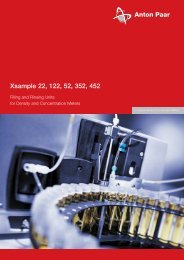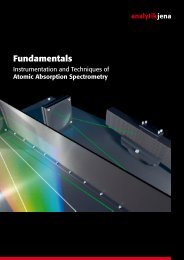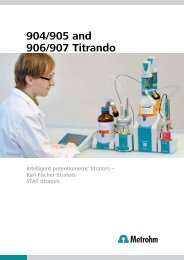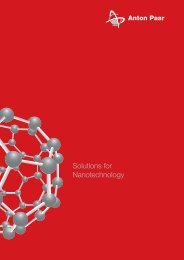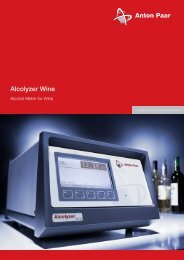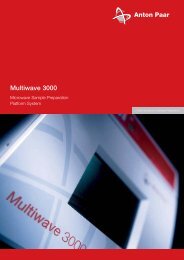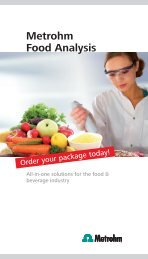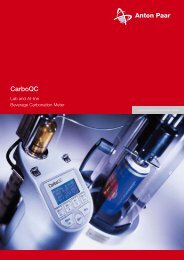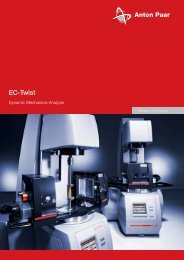Instruments for Measurement of Dissolved ... - MEP Instruments
Instruments for Measurement of Dissolved ... - MEP Instruments
Instruments for Measurement of Dissolved ... - MEP Instruments
Create successful ePaper yourself
Turn your PDF publications into a flip-book with our unique Google optimized e-Paper software.
Why do CO 2<br />
results differ depending on the<br />
measuring method used?<br />
The answer lies in the way the measurement<br />
is influenced by the following factors:<br />
CO 2<br />
≠ CO 2<br />
4 External environmental influences<br />
- Altitude & weather<br />
4 Method-dependent influences<br />
- Snifting<br />
- Compensation tables<br />
- Incomplete equilibration<br />
4 Sample-dependent influences<br />
- <strong>Dissolved</strong> air in the sample<br />
- Package size<br />
Altitude & weather<br />
Environmental factors affect CO 2<br />
measuring instruments.<br />
Anton Paar’s CO 2<br />
meters have an integrated absolute<br />
pressure sensor <strong>for</strong> accurate correction.<br />
Incomplete equilibration<br />
Incomplete equilibration causes the CO 2<br />
measurement<br />
to deliver results which are different than the actual CO 2<br />
content.<br />
Snifting<br />
Snifting is generally per<strong>for</strong>med with traditional pressure/<br />
temperature (p/T) methods <strong>for</strong> compensating dissolved air<br />
when measuring CO 2<br />
in bottles or cans. Snifting means<br />
briefly opening and closing the package in order to release<br />
the overpressure in the headspace to the ambient pressure.<br />
During snifting, some carbon dioxide is also lost from the<br />
beverage which leads to falsified results. To eliminate the<br />
influence <strong>of</strong> snifting, Anton Paar's CO 2<br />
meters use the<br />
Multiple Volume Expansion method, which delivers CO 2<br />
results which are not affected by the air or nitrogen content.<br />
Compensation tables<br />
Tables are used to compensate the effects <strong>of</strong> snifting.<br />
However, as snifting is affected by many external factors, it<br />
is impossible to know whether the tables are compensating<br />
too much, not enough or correctly <strong>for</strong> the snifting effects.<br />
<strong>Dissolved</strong> air in the sample<br />
Traditional pressure/temperature (p/T) methods do not<br />
differentiate between the partial pressure <strong>of</strong> air and the<br />
partial pressure <strong>of</strong> CO 2<br />
measured in the beverage. Pressure<br />
measurement is assumed to be a one-to-one measure <strong>of</strong><br />
carbon dioxide alone, which is incorrect. This effect is also<br />
seen when using instruments which apply single expansion<br />
<strong>of</strong> the measuring chamber.<br />
Package size<br />
Traditional p/T methods determine the CO 2<br />
content indirectly<br />
by measuring temperature and pressure right out <strong>of</strong> the gas<br />
phase in the headspace. Depending on the type <strong>of</strong> package,<br />
the headspace sizes vary, which affects the amount <strong>of</strong> CO 2<br />
measured. Anton Paar’s CO 2<br />
meters directly determine the<br />
CO 2<br />
content out <strong>of</strong> the liquid phase.


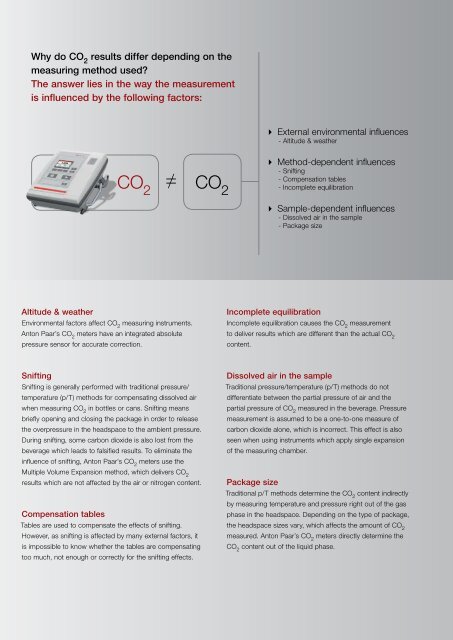
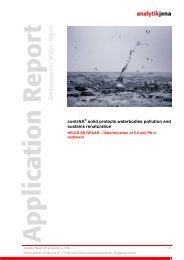
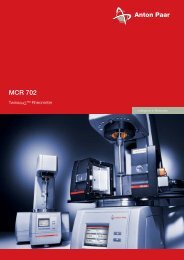
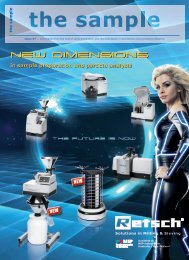
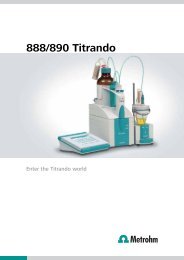
![Rice, size measurement of broken grains [pdf] - MEP Instruments](https://img.yumpu.com/46724497/1/184x260/rice-size-measurement-of-broken-grains-pdf-mep-instruments.jpg?quality=85)
